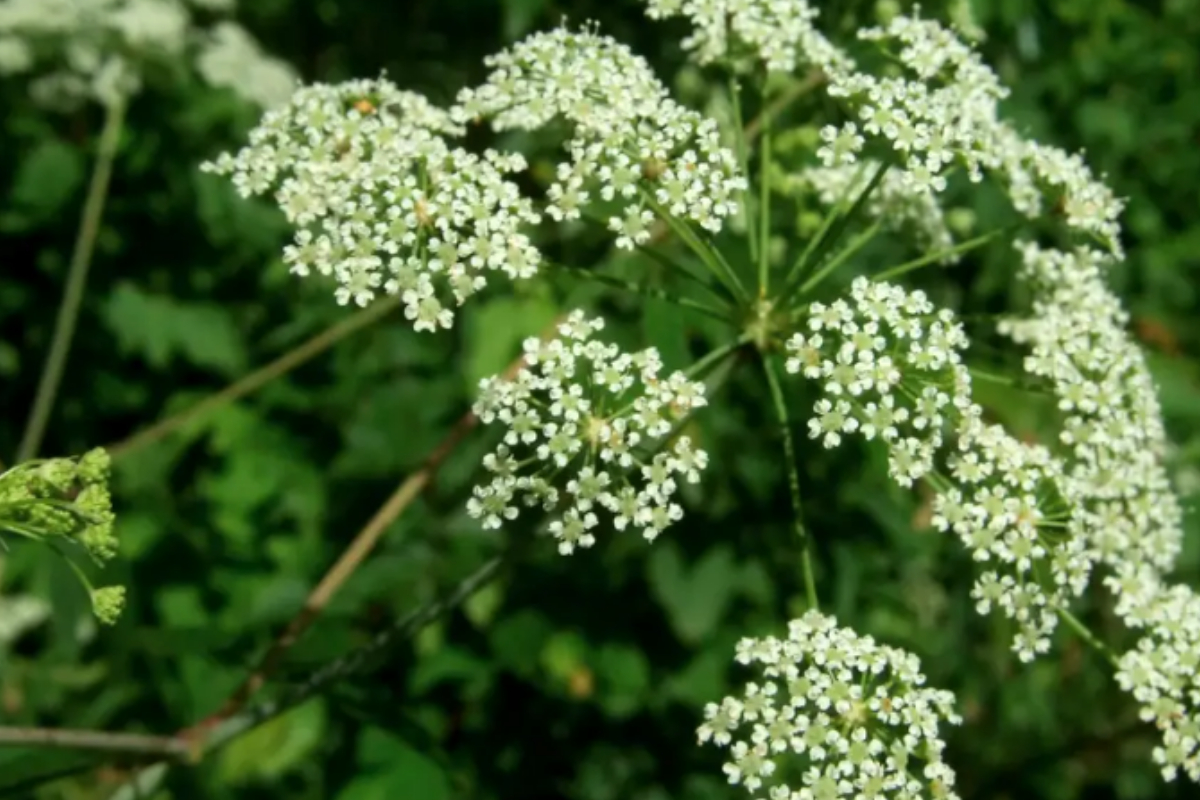- Socrates was the first to die from poison hemlock, then children ate lethal nightshade.
- Eating the plant causes painful convulsions, abdominal cramps, nausea, and death.
- Some of the world’s most popular plants contain deadly toxins that can cause vomiting, diarrhoea, seizures, coma, and death.
Many plants look innocent, yet some contain dangerous poisons. These cryptic creepers caused a dungeon full of deaths.
Socrates was the first to die from poison hemlock, then children ate lethal nightshade. This poisonous plant has killed humans throughout history. This macabre list includes poisonous plants and their symptoms.
1. Hemlock (Cicuta maculata)
Water hemlock is comparable to poison hemlock, which is famous for murdering Socrates.
The plant resembles Queen Anne’s lace and is commonly mistaken for parsnips or celery.
- Phytotoxic
Water hemlock roots contain lethal cicutoxin.
- Symptoms
Eating the plant causes painful convulsions, abdominal cramps, nausea, and death. Survivors often have amnesia or tremors.
2. Deathcap (Atropa belladonna)
Macbeth’s warriors allegedly poisoned the Danes with nightshade wine. Sweet berries used to entice toddlers and adults to eat this deadly shrub. Night is a native of central and southern Eurasia with dull green foliage and glittering black poisonous fruit the size of cherries.
- Phytotoxic
Stems, leaves, berries, and roots contain atropine and scopolamine.
- Symptoms
This plant paralyses the heart and other involuntary muscles. Leaves can irritate skin.
3. Snakeroot (Ageratina altissima)
White snakeroot produces flat-topped clumps of white blooms. Nancy Hanks, Abraham Lincoln’s mother, died from this plant.
- Plant-based poison
The plant contains fatal trematol.
- Symptoms
Loss of appetite, nausea, weakness, abdominal pain, reddish tongue, abnormal blood acidity, and mortality might result from consumption.
4. Cassava (Ricinus communis)
Castor Bean is an elegant African plant.
- Plant poison
Castor oil is made from processed seeds, which contain ricin and are lethal in small doses.
One or two seeds can kill a youngster or adult.
- Symptoms
Ricin in the plant prevents protein synthesis in cells, causing vomiting, diarrhoea, seizures, and death.
5. Rosehip (Abrus precatorius)
Native to tropical locations, Rosary peas are used in jewellery and prayer rosaries.
- Plant-based poison
These seeds contain the ribosome-inhibiting protein abrin. If the seeds are not damaged, they are not harmful.
- Symptoms
Three micrograms of abrin can kill an adult, less than in one seed.
Abrine hinders protein synthesis in cells and can induce organ failure in four days, like ricin.
6. Oleander (Nerium oleander)
Pliny the Elder described oleander’s beautiful blossoms in ancient Rome.
- Plant toxicity
All portions of the plant are dangerous and include oleandrin and neriine, cardiac glycosides.
- Symptom
Vomiting, diarrhoea, irregular pulse, seizures, coma, and death can result from eating oleander.
Leaves and sap irritate some people’s skin.
7. Tobacco (Nicotiana tabacum)
Tobacco is the most frequently farmed non-food plant in the world, but it’s dangerous.
- Plant-based poison
Every component of the plant, especially its leaves, contains lethal nicotine and anabasine.
- Symptom
Nicotine is psychotropic and addicting despite being a heart toxin.
Tobacco may be the world’s worst plant, causing 5 million fatalities a year.
[embedpost slug=”/worlds-deadliest-garden-this-english-garden-contains-over-100-lethal-toxic-plants/”]





















